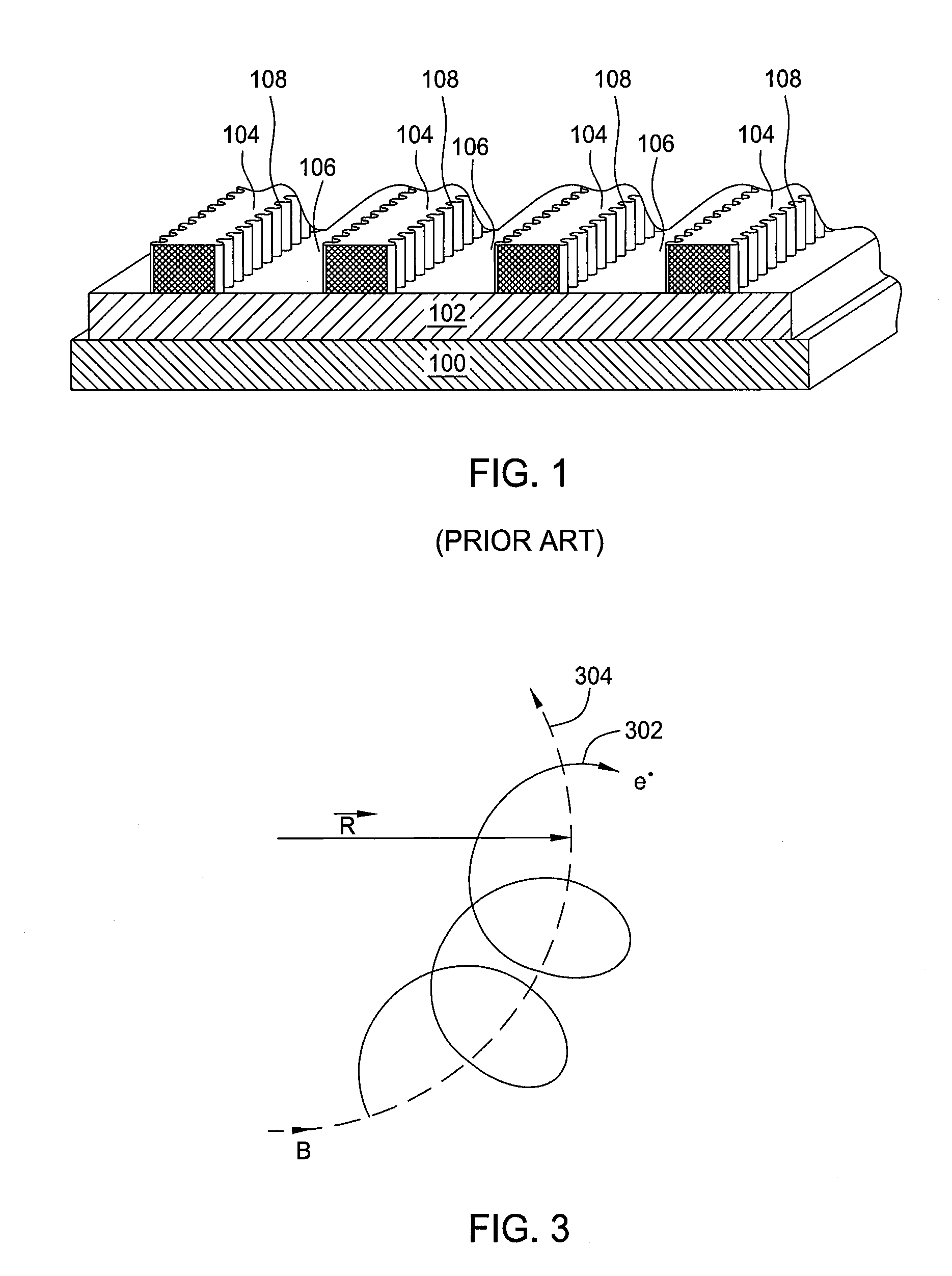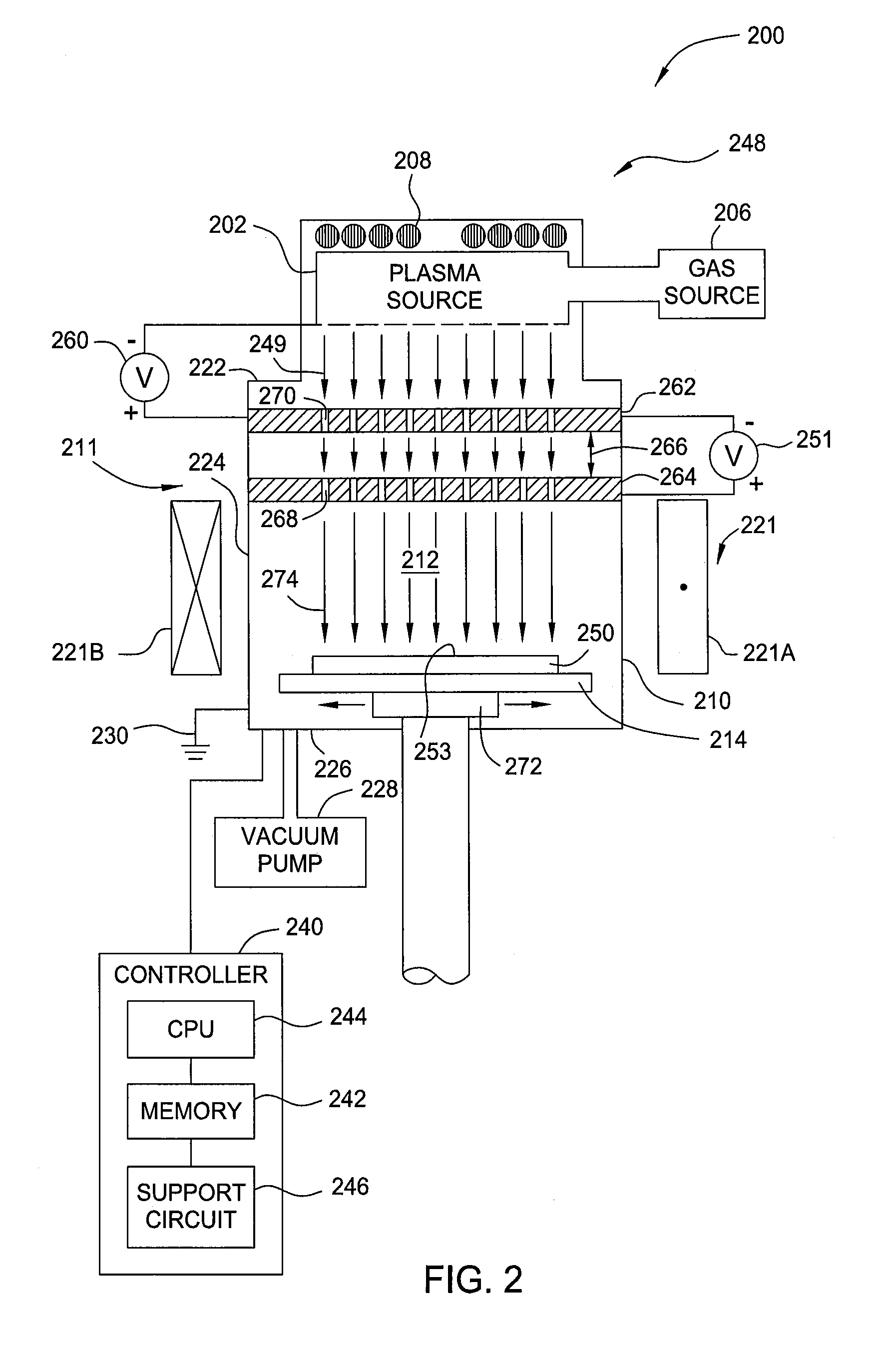Methods and apparatus for performing multiple photoresist layer development and etching processes
- Summary
- Abstract
- Description
- Claims
- Application Information
AI Technical Summary
Benefits of technology
Problems solved by technology
Method used
Image
Examples
Embodiment Construction
[0024]Embodiments of the present invention include methods and apparatus for controlling and minimizing process defect in a development process, modifying LWR of a photoresist layer after the development process, and maintaining good profile control during subsequent etching processes. The development process may be performed in an inductively coupled plasma (ICP) reactor to dry plasma develop the photoresist layer after an exposure process. Subsequently, the developed photoresist layer disposed on the substrate may have a LWR control process performed thereon to minimize roughness as formed on the edge line of the photoresist layer. The LWR control process may be performed in the same ICP chamber as utilized to perform the development process. The ICP process is performed to provide a chemical and electron grinding process in a nanometer scale to develop a photoresist layer after an exposure process and subsequently smooth the edge of the developed photoresist layer pattern thereby...
PUM
 Login to View More
Login to View More Abstract
Description
Claims
Application Information
 Login to View More
Login to View More - R&D
- Intellectual Property
- Life Sciences
- Materials
- Tech Scout
- Unparalleled Data Quality
- Higher Quality Content
- 60% Fewer Hallucinations
Browse by: Latest US Patents, China's latest patents, Technical Efficacy Thesaurus, Application Domain, Technology Topic, Popular Technical Reports.
© 2025 PatSnap. All rights reserved.Legal|Privacy policy|Modern Slavery Act Transparency Statement|Sitemap|About US| Contact US: help@patsnap.com



